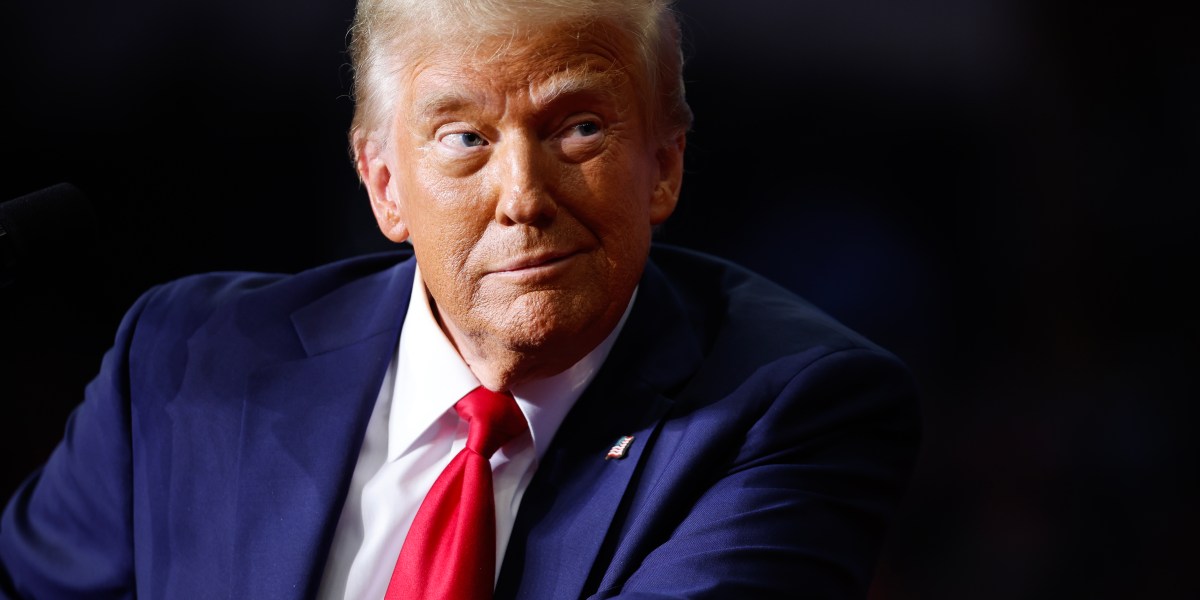“Steel Stocks Put the Pedal to the Metal” the Wall Street Journal declared within hours of Donald Trump’s election victory. Shares of U.S. Steel, Nucor, and Steel Dynamics all surged the moment trading opened. It was an eerie, almost exact replay of what had happened after Trump’s surprise win eight years earlier. Then as now, investors stampeded into those same steel companies, hopeful that deliverance had finally come to a Rust Belt industry in distress.
But what happened last time around is a warning for investors, business leaders, and the incoming Trump administration. Those steel stocks that jumped so encouragingly eight years ago continued to rocket for a while; U.S. Steel’s shares more than doubled. Yet within three years, with new steel tariffs in place, America’s major steel stocks had lost all their gains and were trading below where they had been before the election.
The steelmakers’ saga is a microcosm of Trump’s record with U.S. business during his first term. All the key issues then—tariffs, immigration, taxes, regulation—are front and center now. As he staffs his administration and strategizes what actions to take when, much depends on what lessons he has drawn from his presidential experience the first time around.
It was a story of extremes. CEO confidence as gauged by the Conference Board rose on his election, but three years later it had plunged to depths not recorded since the worst days of the financial crisis. Small business owners rejoiced when Trump won, but their optimism, as surveyed by the National Federation of Independent Business, began to slump substantially two years later. By late 2019, hundreds of industry associations, from the tiny American Down and Feather Council to the huge National Retail Federation and the U.S. Chamber of Commerce, representing thousands of companies, were publicly opposing his policies on trade, immigration, or both.
The explanation of such a rise and fall is that Trump’s biggest blessings for business were front-loaded. He promised U.S. businesses he would cut their taxes and reduce regulation, and he delivered on both promises in his first year. Regulatory easing happened fast because it’s largely within the executive branch’s control. The public barely noticed, since most business regulation is incomprehensible outside the industry and plays out below the radar. But CEOs noticed immediately. Regulators became less adversarial. Getting permits and approvals was faster and easier. One CEO told Fortune, “The attitude shift was palpable.”
A replay in 2025 is likely, especially since the Biden administration has set a record for the regulatory burden imposed on the private sector. So says the American Action Forum, a center-right think tank that calculates regulatory costs. Total under Biden so far: $1.8 trillion. Under Trump: $65 billion.
Cutting taxes was much harder, achievable only because Republicans held majorities in both chambers of Congress. The result was a once-in-a-generation tax reform notable for cutting the corporate tax rate from 35% to 21%. Several key provisions, including that one, are scheduled to sunset at the end of 2025 unless Congress acts, so Trump will spend much of his first year in office on taxes, just as he did in his previous first year in office. The outcome depends heavily on which party controls the House of Representatives, which is undecided as this is written.
Trump’s first year looked like a home run for business. It stopped cold in early 2018 when he launched a trade war against China, Mexico, Canada, and Europe. The war started small and escalated through tit-for-tat retaliations that neither side was willing to stop. As tariffs rose around the world, supply chains had to be re-worked. Uncertainty increased; global growth fell. Even America’s steelmakers suffered, as rising trade barriers dampened demand globally.
Notably, President Biden has kept most of Trump’s tariffs, raised some, and added more.
Trump’s other high-profile policy, throttling immigration, also hurt business. Large industries, especially agriculture, hospitality, and construction, rely heavily on immigrants for employees. Tech companies in Silicon Valley want to hire immigrants with Ph.D.s; the whole U.S. tech sector is unimaginable without immigrants. The number of immigrants entering the U.S. fell to the fewest in over a decade, which U.S. business overall hated.
The lessons from Trump 1.0 are clear. U.S. business loves tax cuts and lighter regulation (no surprise) but opposes drastic anti-immigration policies, and as for tariffs—some companies will want tariffs imposed on foreign competitors, at least at first, but business in general abhors trade wars. The tension is obvious: Reducing immigration and waging trade wars were the foundation of Trump’s successful 2024 election campaign.
So what will he do? Will he stay with his campaign themes and let U.S. business fend for itself, knowing he won’t be running for president again? Or will he focus on his legacy and try to end his term with a strong economy? Forecasting Trump’s actions is especially hard because he holds his cards close to the vest. “I don’t want people to know exactly what I’m doing—or thinking,” he wrote in his 2015 book Crippled America. “I like being unpredictable. It keeps them off balance.”
Trump’s first term shows how his most successful political themes are high-stakes issues for business leaders. They should brace for spending four years off balance.
A newsletter for the boldest, brightest leaders:
CEO Daily is your weekday morning dossier on the news, trends, and chatter business leaders need to know.
Sign up here.
